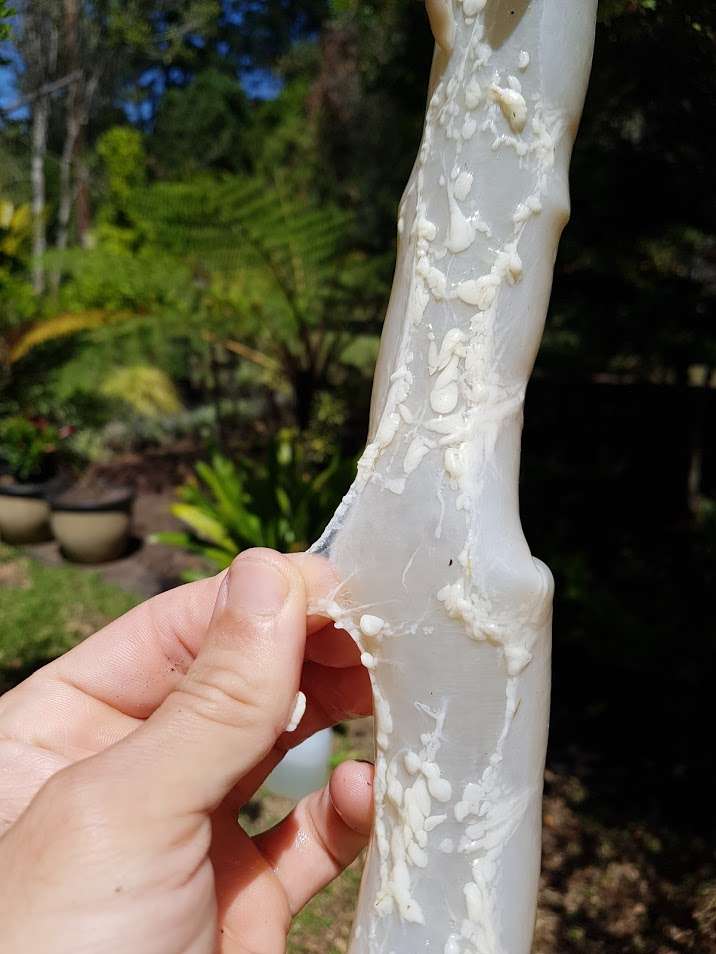Page 1 of 1
Cleaning Beef Casings
Posted: Tue Oct 24, 2017 22:30
by ThomasLake
Hey Guys, I am quite new to sausage making but in my short experience I have had a great time and enjoyed some good results. I haven't posted on the forum before but I have drawn a lot of knowledge and answers from it thus far.
I live in South Africa and generally it is very difficult to get prepared natural casings past a 36mm hog. Recently I was able to get some beef casings from a local butcher which had been cleaned but nothing beyond that.
If I tie an end and run the tap on the other they fill to about 45mm. However there is a vein of firm white fat running along most of the length and also a membrane on the outside. I figured the fat and membrane ought to be removed but in doing so (as gently as possible) I pierced the casing quite a few times...
Does anyone have any experience in cleaning and preparing these? I am itching to use them but I don't want to commit a whole production if my casings aren't right.
On a separate issue, to get up to bigger diameter beef and pork casings (50+) what do I ask for?
Many thanks in advance
Tom
Posted: Wed Oct 25, 2017 07:45
by redzed
Hi Tom and welcome to our forum!
I'm not sure how much fat you have on your middles, but it is quite normal. When we buy beef middles and other beef casings they are turned inside out, so we see the smooth sidee of the beef gut. I occasionally scrape off some of the excess fat, especially from beef bungs when there are often large chunks of fat present. So the key here is to scrape, and not try to cut the fat off. Also don't force it or expect to remove all the fat. That is just impossible without damaging the casing. Remember the fatty side will be on the inside of your sausage and once you make it, usually will not not be visible in the finished product.
The largest hog casings that we can buy here in Canada are classed as 42+, and some may be as large as 45mm. I know that in Europe you can get larger ones 50-70mm, but I haven'y seen anyone selling them at the retail level in North America. Our beef middles are usually 50-60mm. Simply ask the vendors what are the larger diameter natural casings that they sell. And of course you can use collagen, which is available in every possible size.
Posted: Wed Oct 25, 2017 11:01
by ThomasLake
Thanks redzed. I will inquire about those larger sizes and see how I go.
With regard to the casings I have, once they are thoroughly cleaned in and out I leave them inside out for stuffing?
I can get a decent amount of the fat off, it is the trying to remove the membrane that is causing the tears, do I leave that completely intact?
Posted: Wed Oct 25, 2017 14:33
by redzed
Yes, after you stuff the sausage the silky smooth side should be on the outside. And as far as the membrane, can you post a pic of what exactly you are referring to?
Posted: Wed Oct 25, 2017 14:49
by ThomasLake

Hope that works.
Posted: Wed Oct 25, 2017 15:14
by redzed
Great picture! Don't be concerned about the membrane, it will be easy to remove in sections but impossible to remove entirely. Just use a dull knife and scrape off the extra fat and leave the rest alone. That is just the nature of beef middles. Many sausagemakers use this casings because it does impart a special character and taste to the sausage. Rinse throughly soak overnight and stuff!
Posted: Wed Oct 25, 2017 16:21
by Bob K
What type of sausage are you making. Fresh or dry cured? And do you plan on an edible casing?
Posted: Wed Oct 25, 2017 17:13
by ThomasLake
That was my experience exactly, I would get most of it off and then a small piece would snag and tear the casing. I was expecting them to be a little tougher!
I am going to be using them for cured sausage and was hoping they would be edible?
Posted: Wed Oct 25, 2017 22:24
by Bob K
The smaller size rounds like you have, are edible but tougher than Hog casings, When you get up into the larger middles ( 50-65 range) you would want to remove before eating.
